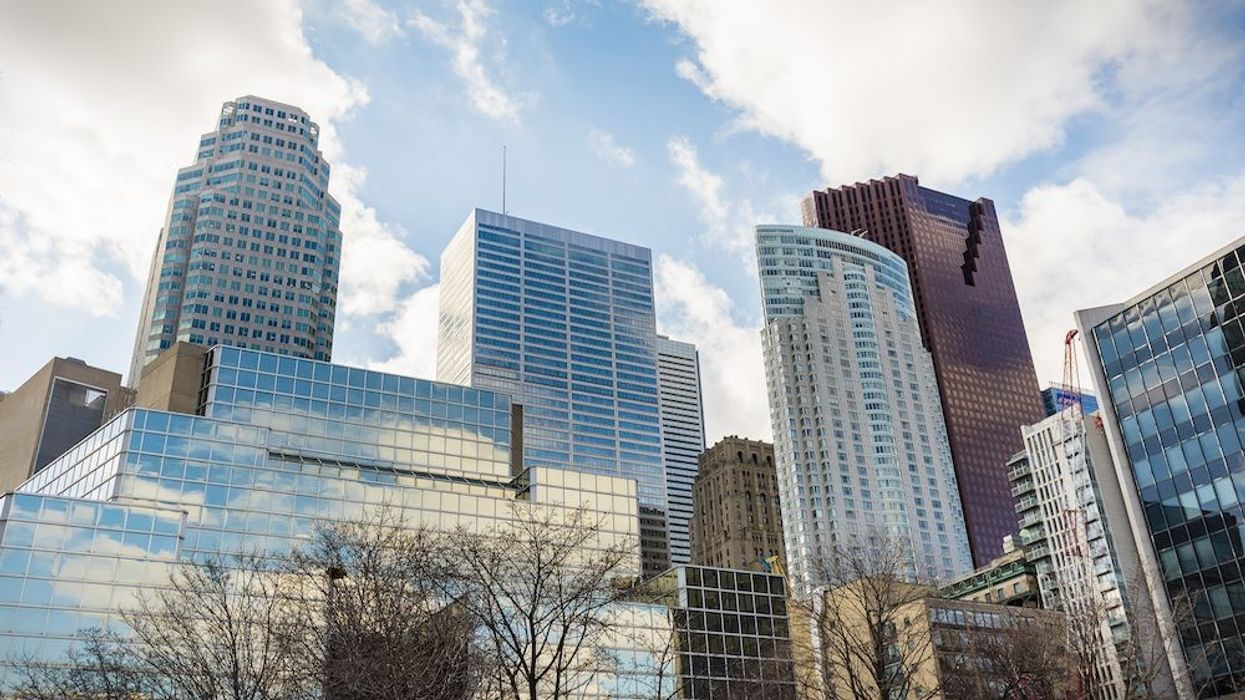For the first time in history -- and in a clear sign the in-person workspace is here to stay -- vacancies for suburban commercial office space continue to be tighter than their downtown counterparts.
This past quarter marks the second consecutive period where vacancy remained lower in markets outside of city cores at 90 basis points, reports CBRE’s Q2 2022 Office Figures report, compared to the national downtown vacancy rate of 16.9%. Seven out of 10 Canadian markets reported declining vacancy rates, officially minting a trend as the sector recovers post-pandemic.
“Canadian office markets are still trying to find their footing in the new world of hybrid work. Suburban office strength shows how habits and business are in flux. While there is good news, economic instability is adding to the challenges facing businesses as they attempt to map out their office requirements for the future,” says CBRE Canada Vice Chairman Paul Morassutti. “To the doomsayers out there, it is increasingly clear that office real estate still has a core purpose and value to businesses, or else we would see a far worse dynamic playing itself out by now.”
READ: Canada’s Office Construction Slips as Cost to Build Rises
However, some downtown markets retained their ranking as office hotspots; conditions cooled in the City of Toronto with a vacancy rate of 11.9% (mainly due to the influx of 612,000 sq. ft of new inventory this year), while Vancouver experienced extraordinarily tight conditions, with the downtown rate squeeze by 50 bps to 7.2%. In all, half of all Canadian markets experienced decreased vacancy including Halifax (-80 bps), Montreal (-20 bps), Ottawa (-20 bps), and Waterloo Region (-10 bps).
Another sign that the commercial office space sector is stabilizing is that the number of sublets -- which can indicate companies changing their office use or rightsizing -- also fell in the second quarter. In fact, the total amount of sublet space available is the lowest since the fourth quarter of 2020, at 14.3M sq. ft. According to CBRE, this is “an indication of growing confidence among businesses using office space.”
Construction levels have also been on the rise in the early part of the year to meet demand, with over 15.1M sq. ft under development across the nation. New projects are launching with gusto in the suburbs of Vancouver and Calgary, not to menton nearly half that inventory amount also underway in the downtown Toronto core.
Class A buildings (those with premium amenities in the most central locations) were in highest demand, outperforming lower-quality and older-aged space, as employers value these features despite the drawback of a downtown commute.
Industrial Office Space Supply Hits Record Low
Meanwhile, CBRE reports, the stock of industrial space remains remarkably scarce; the national availability rate had a record -- though steady -- low of 1.6% last quarter, even though 6.1M sq. ft of new supply came to market. In fact, national construction levels hit a new high, with 43.9M sq. ft of new supply; however, that represents just 2.3% of total available inventory. Large bay facilities are in particularly high demand due to their dearth of supply with more than three-quarters of the existing development pipeline attempting to alleviate the crunch with projects 200,000 sq. ft or larger.
With the exception of Calgary and Edmonton, all Canadian industrial markets now have availability rates of 2% or lower.
The challenges of finding space hasn’t dampened demand, however. Leasing activity was robust, with 7.2M sq. ft of positive net absorption. Toronto saw the largest amount of leasing activity, with 2.6M sq. ft accounted for, followed by Calgary at 2M, and Edmonton at 1.1 -- a testament to the strong demand and available space in the Alberta markets.
According to the report, new leases were predominantly driven by third-party logistics, accounting for 4.4M sq. ft in the first half of the year, after a strong second half of 2021, with 5.2M sq. ft.


















